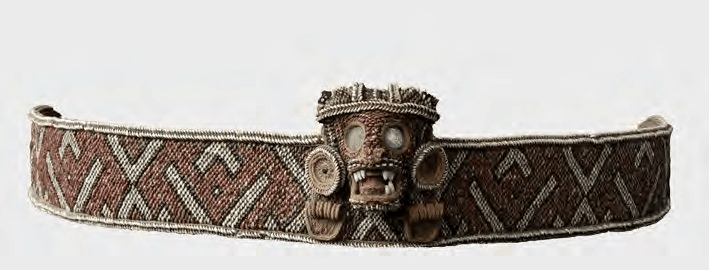In order to continue our exploration of possible origins and alternative meanings of well-known words from the Taino lexicon, we decided to continue our journey with areito and batey. Both words are connected, as the batey has been conceived of as a central place or plaza in which areitos were likely conducted or held while the same space was also used for the ballgame. Therefore, exploring the etymology and development of these words may be useful for understanding the origins of three central components of "Taino" civilization in the prehispanic Greater Antilles. Relying on our usual dictionaries of Warao, Lokono/Arawak, Palikur, Kalinago, Wayuu and Garifuna, we decided to see what looking for similar words and concepts in other languages may reveal.
First, batey. This word does not seem to have close equivalents in other languages besides Kalinago. In Palikur, wetri or higiw can signify place. In Warao, a Spanish-Warao handbook gave us auti autu as en todo el centro. Plaza in Warao is jojonoko or kotubunoko, neither one sounding anything like batey. Lokono doesn't give many clues, either. Central is rendered as anakubo. A Garifuna trilingual dictionary provides amidani for middle. We must look to other languages to see possible ideas on the origins of the word.
It is only in Kalinago where a word sounding somewhat close to batey can be found. In this case, a 17th century French-Kalinago dictionary of Breton uses the word bati to designate the place or corner of someone, as in the space used by someone to hang their hammock in the house. This very specific and limited meaning suggests batey in Taino may have once held a similar meaning for a small corner or space used by someone. Somehow, over time, Taino speakers began to expand their definition of the term to encompass larger plazas or central spaces (as well as retaining the original, restricted use of it, as its survival in Caribbean Spanish attests). Interestingly, the Kalinago used the word bouellelebou to designate a yard or the place between the carbet and houses. The word they used for the place where cabins or homes were established was bouleletebou, clearly related to their word for yard. It seems likely that the Taino batey originally referred to a smaller area or space associated with a particular person, then was expanded upon to designate a larger central plaza (and the associated ballgame). It was possibly also a local development and not particularly influenced by plazas or the ballgame in Mesoamerica, if the linguistic evidence is clear.
Areíto likewise presents a challenge. In Warao, dokotu warakitane or dokoto wara mean to sing. A party is oriwaka. In Wayuu, to sing is ee'irajaa and party is mi'raa. In this same tongue, to remember is so too aa'in. None of these words are particularly close to the Taino word. Neither does Palikur come close, except for one word. However, in that language, musique is arigman. To play an instrument is arigha. More intriguingly, the word for rumor is aritka. This could actually be etymologically linked to the Taino word in the sense of rumor being related to story, storytelling, and narratives. This is also linked to the Garifuna words for remember and remembrance. Indeed, in Garifuna, a trilingual dictionary renders remember as aritagua. Remembrance is aritahani. This is close to the Taino word and the Palikur aritka. Thus, areíto, though accompanied by music and dance, was etymologically related to remembrance, history, tradition and stories. This sense is very clear in some of the Spanish chronicles. Indeed, Oviedo explicitly compared the Taino way of recording history to romances in Spain. It also makes it quite clear that a clear historical component was central to the areíto.
Surprisingly, however, the Kalinago language, at least based on the 17th century French dictionary did not possess such a close equivalent. Nonetheless, the word for storyteller, arianga-lougouti and the word for to speak, arianga, may be related to the Garifuna terms for remember and remembrance. It is also possible that speakers of Taino who fled to the Lesser Antilles during and after the Spanish conquest introduced their version of the word? But, the fact that a similar word was present in Palikur, in South America, suggests that this was not necessary for all 3 languages to develop similar-sounding words for related concepts.
So, what does this foray in language tell us? It establishes quite clearly a historical character for the areíto. The Spanish chronicles are reliable here in describing it as one whose central purpose was linked to history, or at least a "Taino" conception of history and genealogies. The word must have held deep roots and was clearly linked to historical narratives, myths, legends, and tales of lineage (for those of chiefly rank?) that were accompanied by song and dance, possibly to facilitate memory as well as entertain. The batey, on the other hand, seems to have originally designated just a small space, corner, or area of a particular person, which was presumably linked to the idea of a "yard" near their home. This was, at some later date, expanded to refer to larger central plazas and the ballgame. The antiquity of large plazas in the Caribbean suggests that this may have happened much earlier in the history of the language, and part of the reason why it didn't use words of continental origin for the space.

.jpg)
No comments:
Post a Comment